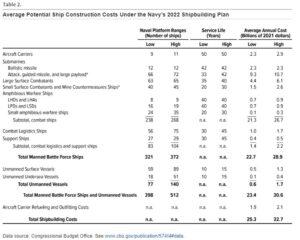
A new Congressional Budget Office (CBO) report assessed the FY ‘22 Navy long-range shipbuilding plan would cost 10 to 43 percent more than recent shipbuilding budgets and the future force could reduce the fleet's Vertical Launch System (VLS) missile capacity. In June, the Navy submitted its long-range shipbuilding plan to Congress but did not include details for construction after fiscal year 2022, outlining the administration’s future priorities and general direction (Defense Daily, June 21). The plan did not disclose definitive…

 By
By 











